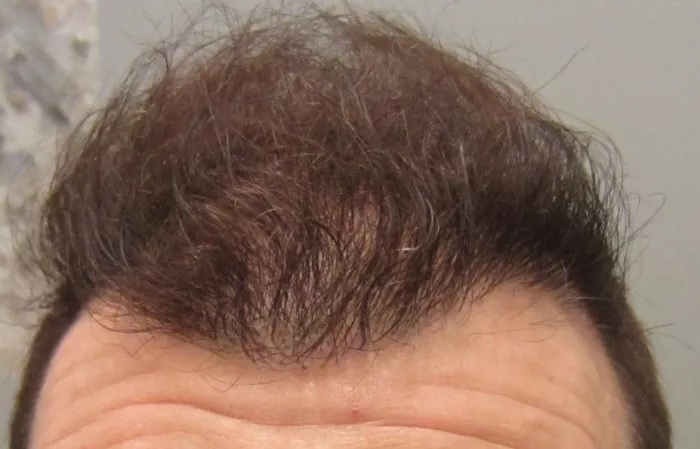Getting a good night’s sleep is essential for the healing process after hair transplant surgery. However, sleeping comfortably can be a challenge in the immediate aftermath of the procedure. In this comprehensive guide, we will explore the best ways to sleep after hair transplant surgery, including tips for minimizing discomfort and ensuring proper healing.
Immediate Post-Operative Care
After hair transplant surgery, patients need to follow specific post-operative care instructions to ensure proper healing and minimize the risk of complications. The immediate post-operative care instructions may include:
Sleeping with the Head Elevated:
Patients should sleep with their head elevated to reduce swelling and discomfort in the scalp area. Elevating the head can be achieved by using pillows or a reclining chair.
Avoiding Touching or Rubbing the Scalp:
Patients should avoid touching or rubbing the scalp for at least the first few days after the procedure. This is to prevent dislodging the newly transplanted hair follicles.
Avoiding Strenuous Activities:
Patients should avoid strenuous activities or exercise for several days after the procedure. This is to prevent sweating and pressure on the scalp.
Using a Special Shampoo or Hair Care Products:
Patients may need to use a special shampoo or other hair care products as instructed by the surgeon to ensure proper healing and minimize the risk of complications.
Taking Prescribed Medications:
The surgeon may prescribe pain medication and anti-inflammatory medication to help manage discomfort and swelling.
Attending Follow-Up Appointments:
Patients should attend all follow-up appointments with the surgeon to monitor the healing process and ensure that any potential complications are addressed promptly.
It is crucial for patients to follow these post-operative care instructions carefully to ensure proper healing and achieve the best possible results. Patients should also contact the surgeon if they have any concerns or questions during the healing process.
The immediate post-operative care instructions may include:
Sleeping with the head elevated to reduce swelling
Avoiding sleeping on the stomach or sides
Using a travel pillow or neck pillow to support the head and neck
Avoiding touching or rubbing the scalp while sleeping
Sleeping with the Head Elevated
Sleeping with the head elevated is an essential part of the post-operative care instructions after hair transplant surgery. Elevating the head can help reduce swelling and discomfort in the scalp area. Patients can use pillows or a reclining chair to elevate their head while sleeping.
Avoiding Sleeping on the Stomach or Sides
Sleeping on the stomach or sides can put pressure on the scalp and interfere with the healing process after hair transplant surgery. Patients should avoid sleeping in these positions for at least the first few days after the procedure.
Using a Travel Pillow or Neck Pillow
Using a travel pillow or neck pillow can help support the head and neck while sleeping. Patients can place the pillow under the neck and behind the head to keep the head elevated and reduce discomfort.
Avoiding Touching or Rubbing the Scalp While Sleeping
Patients should avoid touching or rubbing the scalp while sleeping to prevent dislodging the newly transplanted hair follicles. Patients can use a soft, loose-fitting cap or head covering to protect the scalp while sleeping.
Long-Term Sleeping Tips
As the healing process progresses after hair transplant surgery, patients can gradually return to their normal sleeping positions. However, it is important to continue using a pillow or neck support to keep the head elevated while sleeping for at least the first few weeks after the procedure.
In addition to the immediate post-operative care instructions, there are some long-term sleeping tips that patients can follow to ensure proper healing and maintain the results of the hair transplant surgery:
Use a Soft Pillow:
Patients should use a soft pillow to avoid putting pressure on the scalp while sleeping. A soft pillow can also help prevent the hair from tangling or matting.
Avoid Sleeping on the Stomach or Sides:
Patients should continue to avoid sleeping on the stomach or sides for several weeks after the procedure to prevent pressure on the scalp.
Be Gentle While Brushing or Combing the Hair:
Patients should be gentle while brushing or combing the hair to avoid pulling or dislodging the newly transplanted hair follicles.
Avoid Tight Hairstyles:
Patients should avoid tight hairstyles, such as ponytails or braids, for several weeks after the procedure to prevent pulling on the scalp.
Protect the Scalp from Direct Sunlight:
Patients should protect the scalp from direct sunlight by wearing a hat or using a sunscreen designed for the scalp.
By following these long-term sleeping tips, patients can ensure proper healing and maintain the results of the hair transplant surgery. It is also important for patients to continue following a healthy hair care regimen, including regular washing and conditioning, to maintain the health and appearance of their hair.
Conclusion
Sleeping after hair transplant surgery can be a challenge, but following the post-operative care instructions and using the tips outlined in this guide can help minimize discomfort and ensure proper healing. Patients should sleep with their head elevated, avoid sleeping on the stomach or sides, use a travel pillow or neck pillow for support, and avoid touching or rubbing the scalp while sleeping. By following these tips, patients can achieve the best possible results and enjoy a good night’s sleep during the healing process.
Related Topics:

